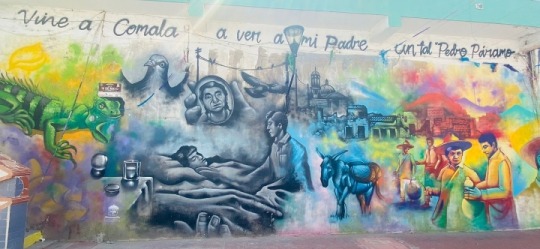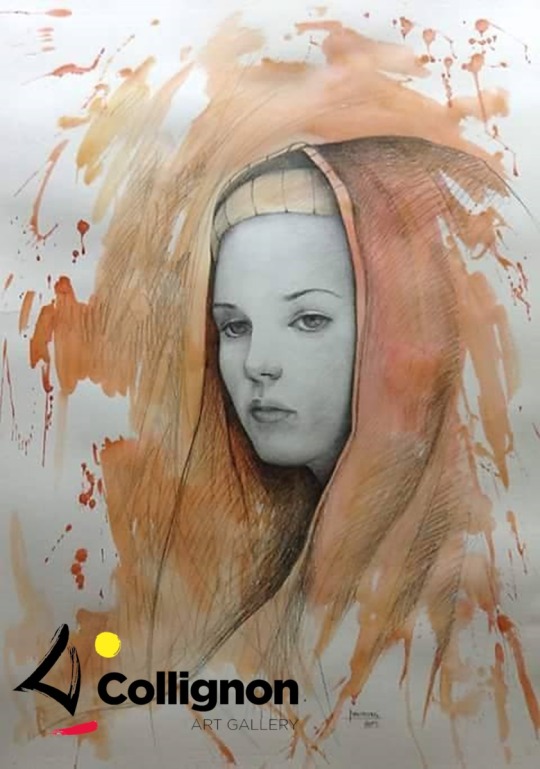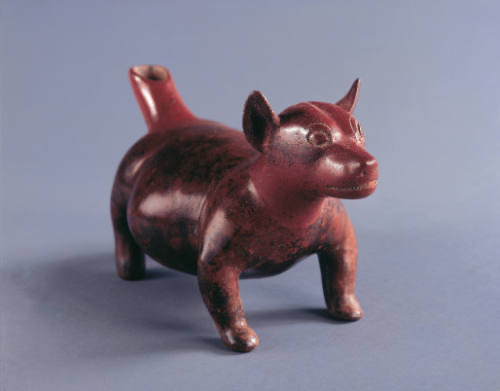#Comala
Explore tagged Tumblr posts
Text

@jaimeblancarte Comala, Col. 2024
#shadow#photos#photographer#photography#fotos tumblr#fotos#mextagram#artists on tumblr#urban#tumblr mexico#mexico#nuit#Comala
21 notes
·
View notes
Text

—¿Qué es? —me dijo.
—¿Qué es qué? —le pregunté.
—Eso, el ruido ese.
—Es el silencio...
Juan Rulfo
7 notes
·
View notes
Text
"¿Ya murió? ¿Y de qué?
-No supe de qué. Tal vez de tristeza. Suspiraba mucho.
-Eso es malo. Cada suspiro es como un sorbo de vida del que uno se deshace".
Juan Rulfo - Pedro Páramo.

4 notes
·
View notes
Text

Me Encantó Esta Publicación Cortesía Está Amiga Que Tengo A Lo Lejos Pero Que Siempre Está..♡.
8 notes
·
View notes
Text

Comala, mucho mas que un lugar, un estado de animo, no se sale, jamás vuelves a salir de Comala.
2 notes
·
View notes
Text

Al final de todo ahí se encontraban , enterrando a un muerto que no recibió el perdón de Dios ni la bendición del Padre , sentenciado a qué su alma vagara en pena hasta la eternidad, tenía a su alrededor llorando personas que ya no eran personas solo eran muertos que como el vagan por las calles de Comala tratando de encontrar el perdón y la bendición de Dios , eran simples muertos enterrando a un muerto. Porque recuerda que estamos en Comala un pueblo de muertos...
1 note
·
View note
Text










THE LAGOON para Revista 192
Fotografía: Alejandro Romero Estilismo: Edgar Morales Modelo: Juan Pablo Locación: El Remate, Colima. México
#ElRemateColima#Colima#Comala#FashionEditorial#FashionMagazine#Revista192#Photoshoot#Art#PhotoArt#Photography#FashionPhotography#Lagoon#TheLagoon#Editorial#Magazine#Style#FashionStylist#AlejandroRomeroPhoto#AlejandroRomero
1 note
·
View note
Text
I returned from visiting my family and got home last night around midnight. I left my suitcase and laptop backpack on the floor. I woke up at around 5 am to water all over my floor. A tube from the bathroom sink snapped and it was shooting water everywhere and I couldn't close the water flow, la llave de paso, idk what's called. I had to wake up the landlord to come help who thankfully solved the issue and fixed the sink. There was still water everywhere, so I had to get that out.
I am so so tired and all of that is gonna be a bore to clean later, but the only thing ruined was my copy of Pedro Páramo and really I am just relieved and thankful that past Barbi decided to take out the laptop from the backpack and put it on the table for no reson because any other time I would have just left it there.
15 notes
·
View notes
Text
#CollignonArtGallery presenta la #SalaComalaBautista

View On WordPress
2 notes
·
View notes
Photo








I came to Comala because I had been told that my father, a man named Pedro Páramo, lived there. It was my mother who told me. And I had promised her that after she died I would go see him. I squeezed her hands as a sign I would do it. She was near death, and I would have promised her anything. “Don’t fail to go see him,” she had insisted. “Some call him one thing, some another. I’m sure he will want to know you.” At the time all I could do was tell her I would do what she asked, and from promising so often I kept repeating the promise even after I had pulled my hands free of her death grip. Still earlier she had told me: “Don’t ask him for anything. Just what’s ours. What he should have given me but never did… Make him pay, son, for all those years he put us out of his mind.”
PEDRO PÁRAMO (2024) dir. Rodrigo Prieto, adapted from the novel Pedro Páramo by Juan Rulfo
#filmgifs#moviegifs#fyeahmovies#userfilm#useroptional#userstream#adaptationsdaily#dailyworldcinema#userkraina#userteri#pedro paramo#author: juan rulfo#ours#by airam
160 notes
·
View notes
Note
I’ve been doing some research on West Mexico cultures, and because I am mostly using Google translate when looking at museum databases, does “shot tomb burial culture” ring a bell to you? I’d love to look more into it but just searching that didn’t get me very far. Thank you!!
I don't know why it is translating to "shot", but it shouldn't. It should be "shaft".
The shaft tomb culture should also more appropriately be termed cultures because there was no one single culture spread across West Mexico, but rather many cultures with their own unique characteristics which happened to participate in the tradition of burying their dead in tombs dug below ground that were accessed by vertical shafts. The Teuchitlán Culture of the Tequila Valleys, my specialty, was one such culture. But so, too, were the Ixtlán del Rio, Comala, Tuxcacuesco, and Bolaños cultures.
https://docs.google.com/document/d/e/2PACX-1vSXrLr5DJwGA-dxgsVI34p07ip0VcoSKwbuihRLPZpE-aMXi6P-7EKVrTfqVdDKRcuCXAnFm3ARyGRF/pub
Here is an incomplete bibliography on all things West Mexico that I have not updated since I passed my qualification exams a couple of years ago. While extensive (and possibly overwhelming), there's a lot more that could be added. I can recommend specific texts if you want.
24 notes
·
View notes
Text

@jaimeblancarte Comala, Col. 2024
#eglise#Comala#photos#photographer#photography#fotos tumblr#fotos#mextagram#artists on tumblr#urban#tumblr mexico#mexico#tumblrlove#tumblrs#best picture#picoftheday
19 notes
·
View notes
Text

Comala Dog Effigy
Precolumbian Mexico. Colima Culture. 100-400 CE.
Memphis Brooks Museum of Art.
#art#culture#history#mexico#mexican history#native history#native american history#dog#animals in art#animals#ancient history#Memphis brooks museum of art#museum#archaeology#colima
29 notes
·
View notes
Text

A su llegada a México, el escritor argentino Jorge Luis Borges «pidió un favor» a sus anfitriones. Quería hablar con Juan Rulfo. Le sugirieron entonces un desayuno. «Pido clemencia -respondió-. Prefiero los atardeceres. Las mañanas me derrotan. Ya no tengo el brío ni las fuerzas para entregar al día lo que se merece. Hoy el crepúsculo me sienta mejor. Sólo quiero conversar con mi amigo Rulfo».
Rulfo: Maestro, soy yo, Rulfo. Que bueno que ya llegó. Usted sabe como lo estimamos y lo admiramos.
Borges: Finalmente, Rulfo. Ya no puedo ver un país, pero lo puedo escuchar. Y escucho tanta amabilidad. Ya había olvidado la verdadera dimensión de esta gran costumbre. Pero no me llame Borges y menos «maestro», dígame Jorge Luis.
Rulfo: Qué amable. Usted dígame entonces Juan.
Borges: Le voy a ser sincero. Me gusta más Juan que Jorge Luis, con sus cuatro letras tan breves y tan definitivas. La brevedad ha sido siempre una de mis predilecciones.
Rulfo: No, eso sí que no. Juan cualquiera, pero Jorge Luis, sólo Borges.
Borges: Usted tan atento como siempre. Dígame, ¿cómo ha estado últimamente?
Rulfo: ¿Yo? Pues muriéndome, muriéndome por ahí.
Borges: Entonces no le ha ido tan mal.
Rulfo: ¿Cómo así?
Borges: Imagínese, don Juan, lo desdichado que seríamos si fuéramos inmortales.
Rulfo: Sí, verdad. Después anda uno por ahí muerto haciendo como si estuviera uno vivo.
Borges: Le voy a confiar un secreto. Mi abuelo, el general, decía que no se llamaba Borges, que su nombre verdadero era otro, secreto. Sospechoso que se llamaba Pedro Páramo. Yo entonces soy una reedición de lo que usted escribió sobre los de Comala.
Rulfo: Así ya me puedo morir en serio.
#jorge luis borges#juan rulfo#frases#pensamientos#escritos#fragmentos#literatura#escritores#libros#literatura universal#anecdotas
12 notes
·
View notes
Text

"A dog carrying a corncob". Culture: Western Mexico/ Tumbas de tiro. Style: Comala. Place of origin: Colima. Date: 300 BCE-CE 600. Medium: Modeled, incised and burnished clay.
15 notes
·
View notes
Text


DOGS
Comala Phase. Colima, West Mexico
c. 200 B.C. - A.D. 300 Fired Clay
Bowers Museum
115 notes
·
View notes